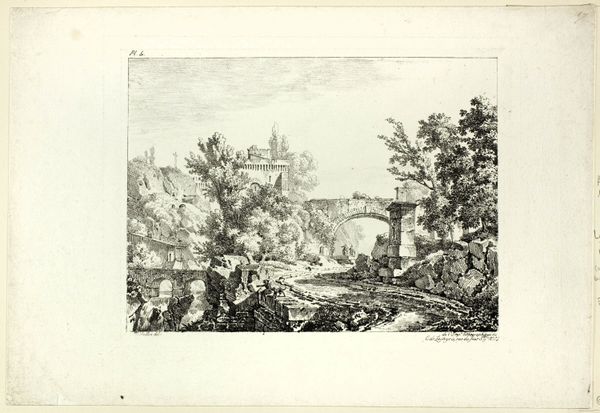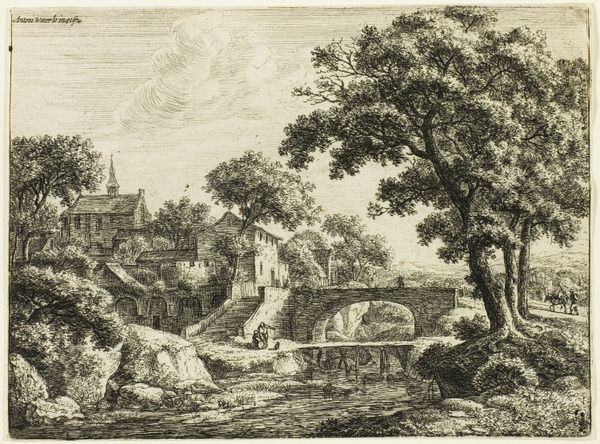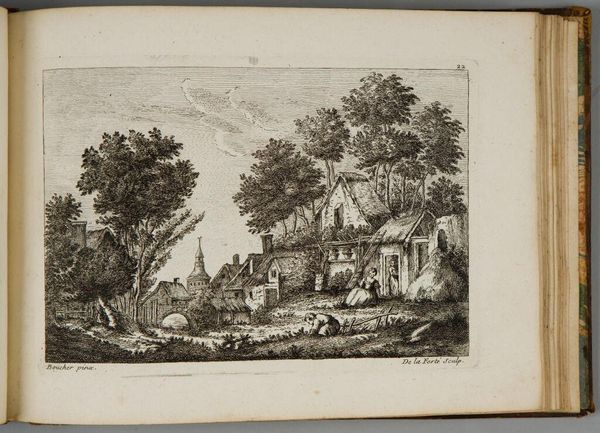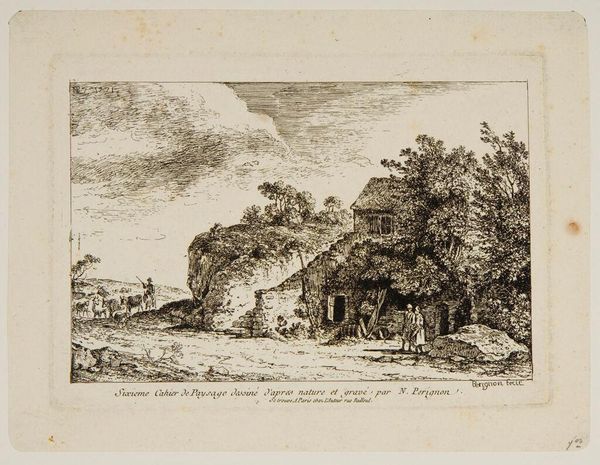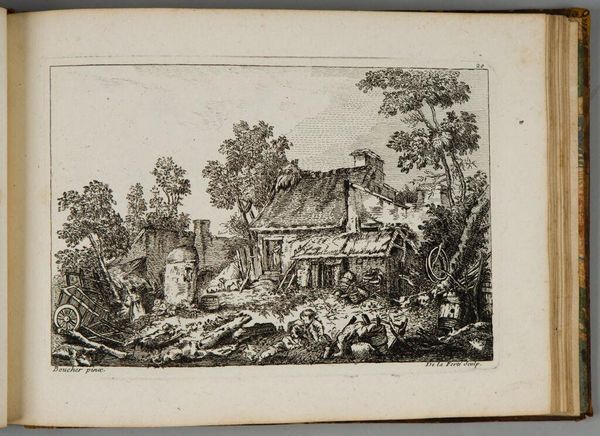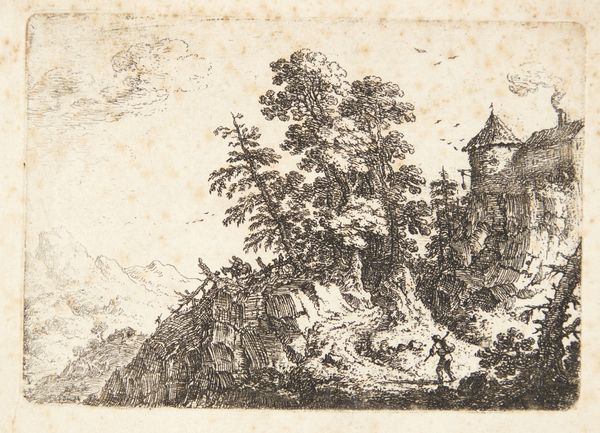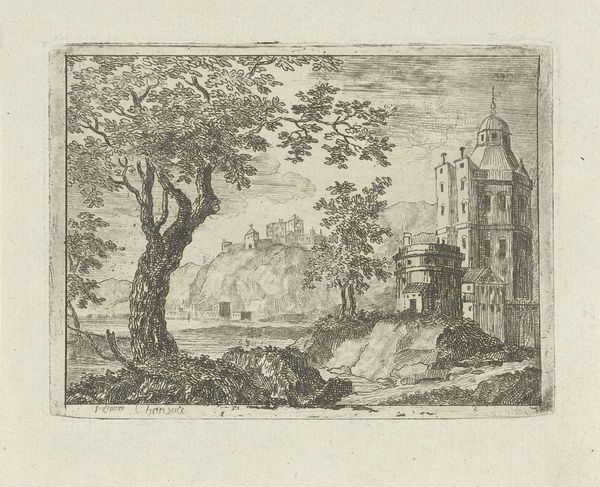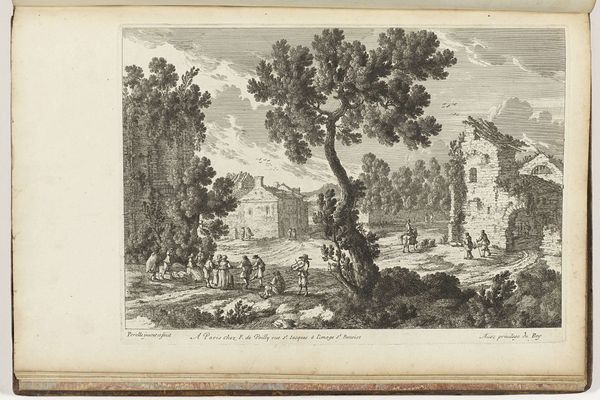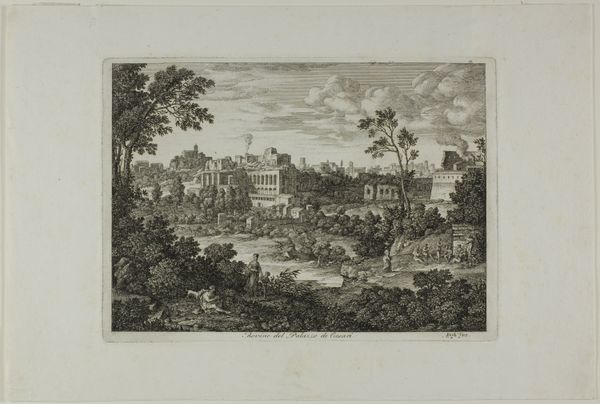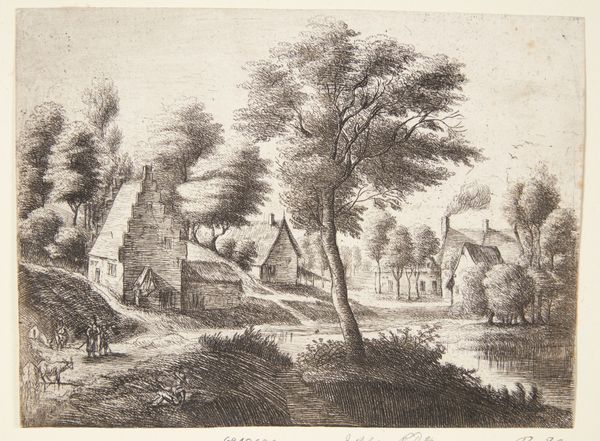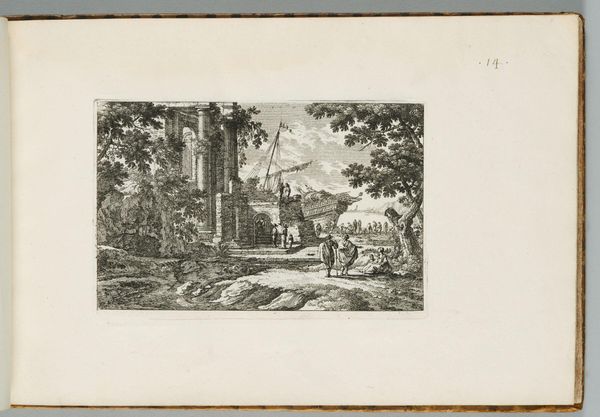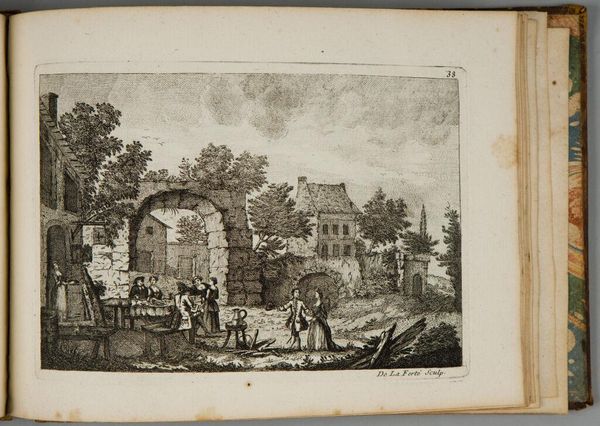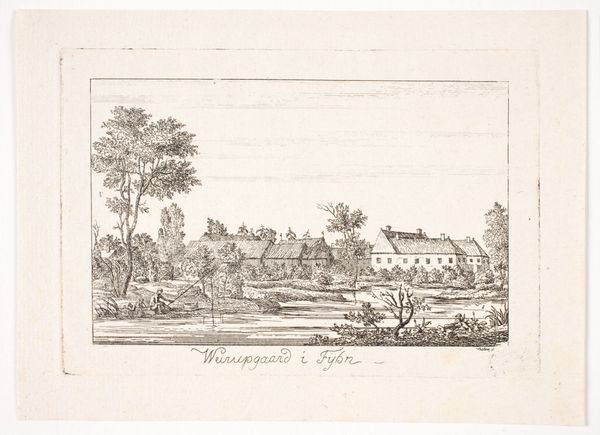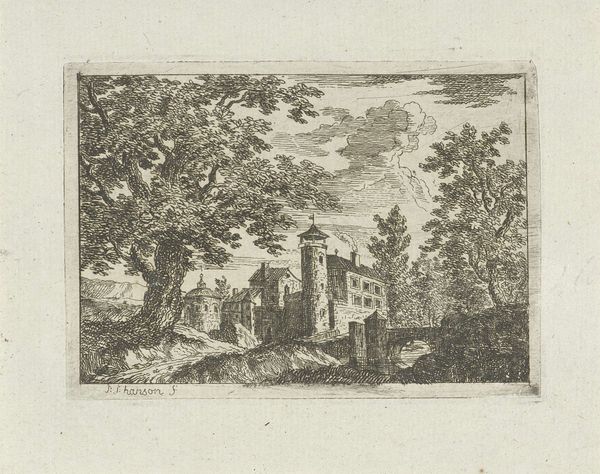
aquatint, drawing, lithograph, print, etching, paper, engraving
#
aquatint
#
drawing
#
lithograph
# print
#
etching
#
landscape
#
paper
#
romanticism
#
engraving
Dimensions: 195 × 265 mm (image); 267 × 357 mm (sheet)
Copyright: Public Domain
Editor: Here we have Achille Etna Michallon's "Landscape with a Mill and Castle" from 1817, an intricate print combining etching, engraving, aquatint, lithograph and drawing. It's incredible the amount of texture Michallon was able to create with what appears to be purely monochromatic methods! What can you tell me about it? Curator: Look closely at the techniques. The aquatint, etching and engraving allowed for the mass production of an image consumed widely. A picturesque castle and a working mill are combined to represent the landscape: a social commentary on labor within an idealized setting. We might even examine this Romantic scene as the literal landscape being consumed for production and aesthetic viewing! What sort of implications might this landscape depict, considering its moment of creation? Editor: You mean the printmaking allowed for a mass audience and broader dissemination of the image...so the landscape itself becomes a commodity through its artistic representation? The print's social commentary is implicit, subtly blending idealized nature with tools for productivity and commodity! I'd not considered that before... Curator: Indeed. And consider also how the printmaker’s labor—the very human effort in reproducing this scene—is somewhat masked by the ease of reproducibility afforded by the medium. It encourages us to question who benefits from this commodification, and what aspects of labor are being erased or glorified? Editor: I never thought of landscape prints as a form of material or even social critique, but that's given me an entirely different perspective. Thank you. Curator: Absolutely. Paying close attention to the making, to the material conditions and networks of distribution can unlock powerful meanings within even seemingly benign landscapes.
Comments
No comments
Be the first to comment and join the conversation on the ultimate creative platform.
